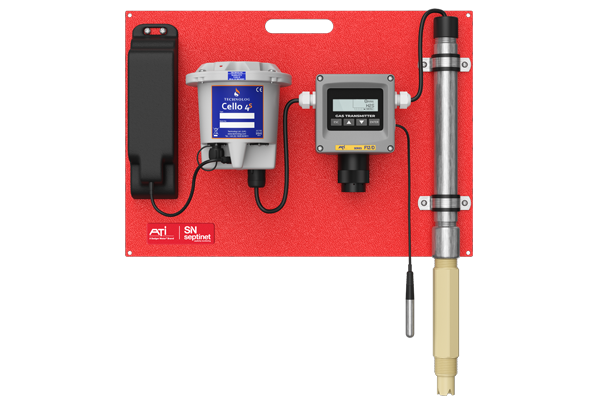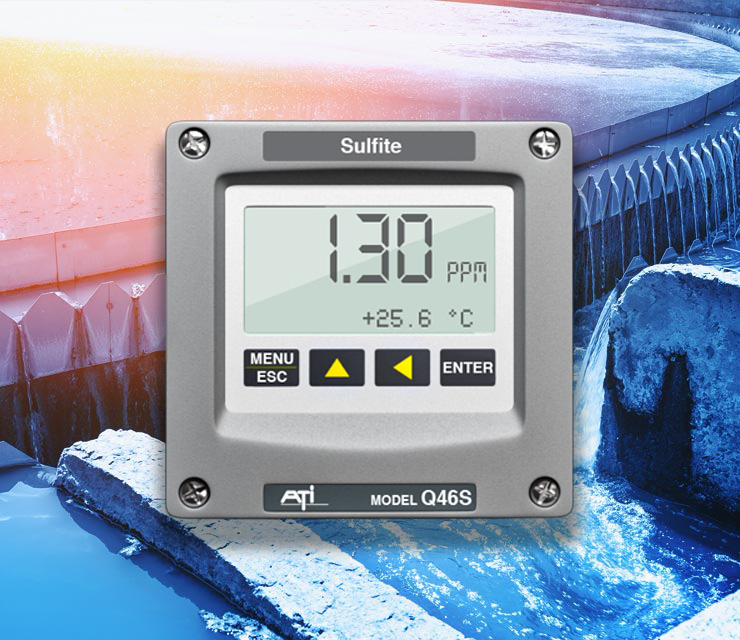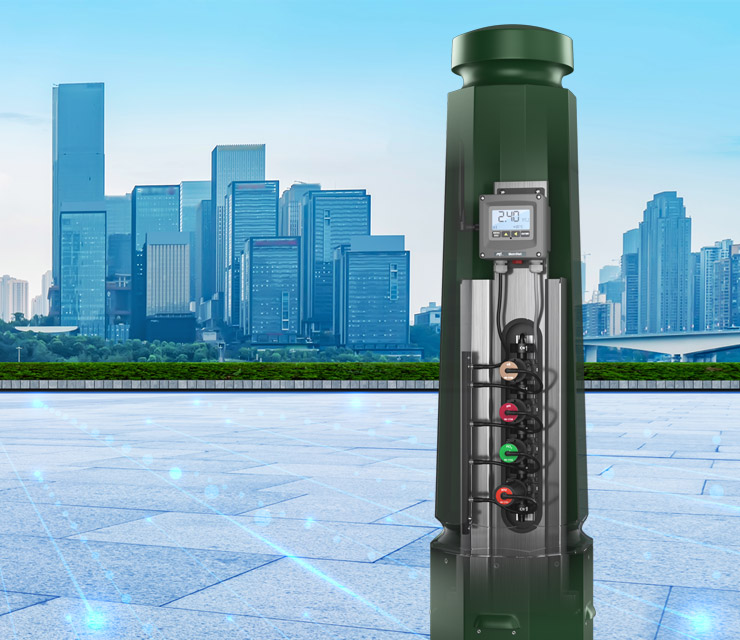- Water Monitoring
- WATER MONITORS BY PARAMETER:
- WATER MONITORING PRODUCTS:
- EchoSmart Sludge Blanket Monitor
- FilterSmart Gravity Filter Backwash Monitor
- Q46N Dissolved Ammonia Monitor
- Q46H/62-63 Residual Chlorine Monitor
- Q46H/79PR Total Chlorine Monitor
- Q46H/65 Chlorine Dioxide Monitor
- Q46C2 2E Conductivity Monitor
- Q46C4 4E Conductivity Monitor
- Q46/84 Hydrogen Peroxide Monitor
- Q46D Dissolved Oxygen Monitor
- Q45D Dissolved Oxygen Transmitter
- Q46H/64 Dissolved Ozone Monitor
- Q46/85 Peracetic Acid Monitor
- Q46P/R pH & ORP Monitor
- Q45C2 2E Resistivity Transmitter
- Q46S/66 Residual Sulfite Monitor
- Q46/88 Suspended Solids Monitor
- Q46/76 Turbidity Monitor
- View More
- Smart Water Solutions
- Gas Monitoring
- GAS MONITORS BY PARAMETER:
- GAS MONITORING PRODUCTS:
- A12 2-Wire Toxic Gas Transmitter
- A12-17 Combustible Gas Detector
- A14/A11 Modular Gas Detector
- A21 Gas Sampler
- A23-14 Ozone Generator
- B12 2-Wire Gas Transmitter
- B12 Wet Gas Detector
- B14 Gas Alarm Module Receivers
- C12-17 Combustible Gas Detector
- C21 Dri-Gas Sampling System
- D12 Toxic and Combustible Gas Detector
- D12Ex-IR Infrared Gas Transmitter
- D16 PortaSens Portable Gas Leak Detector
- E12-15 IR High Level Ammonia Gas Detector
- F12D Toxic Gas Detector
- F12iS Toxic Gas Transmitter
- GasSens Midi Controller
- IsoMon Dual-Channel Gas Detection
- Q45S Wet H2S Gas Detector
- Industries
- Support
- News & Case Studies
Wastewater process control is increasingly complex as regulations become more stringent. The monitoring of wastewater quality plays a crucial part in identifying existing or emerging problems within sewer networks. ATi’s Director of Technical Services, Chris McTear, discusses the new technological advances transforming the future of wastewater management, offering the ultimate smart septicity solution for sewer networks.
Managing and controlling septicity in sewer networks has long been one of the greatest challenges for wastewater utilities, with high levels proving to be costly due to toxicity, corrosion and odour nuisance. Septic sewage delivered into an activated sludge plant creates considerable process complications.
Wastewater quality monitoring data is incredibly useful in helping to monitor septicity levels, although historically this has not been easy to gather. Until now, water specialists traditionally used a range of techniques, including weekly samples, analysing sediments, controlling flow and developing aerobic environments. Controlling septicity also relied on maintaining the supply of oxygen to oxidise previously formed sulphide; minimising the emission of hydrogen sulphide gas into the atmosphere, deodorising vented air, and the use of protective coatings on pipes.

However, in today’s modern world, new technology has now been developed. By bringing together this technology, ATi offers a unique, unified solution for septicity monitoring and prevention in sewer networks, utilising both liquid and gas phase sensors. ATi’s SeptiNet is an innovative breakthrough in smart, continuous and accurate wastewater septicity monitoring for sewer networks. Forming part of a pioneering range of smart sewer network solutions, including the integrated ATi and s::can revolutionary SewerNet water quality monitoring solution, SeptiNet monitors both hydrogen sulphide (H2S) gas and Oxidation-Reduction Potential (ORP), offering the ultimate smart septicity monitoring solution.
Due to ATi’s unique manufacturing base of both water and gas analytical sensors, SeptiNet allows wastewater utilities to monitor both liquid and gas in one combined solution anywhere within the sewer network. Data generated from SeptiNet is linked directly to the customer’s preferred RTU and transferred to an intermediate cloud for analytics, integrated into the customers own Scada reporting protocol.
Septicity in Sewer Networks
Wastewater becomes septic when organic matter decomposes and forms a foul smell, due to the absence of free oxygen. This common problem occurs within sewers when low flows and long retention times combine, resulting in bacteria multiplying in the anaerobic conditions that creates septicity.
Consequent formation of H2S gas can cause a nuisance with its characteristic foul smell, leading to customer complaints. This lethal gas also causes a hazard during entry into chambers and its reaction with moisture results in the formation of sulphuric acid, which has a corrosive and costly effect on infrastructures.
SeptiNet: Smart septicity prevention for sewer networks
To predict, prevent and control septicity of an entire sewer network is complex, however ATi’s SeptiNet removes any guess work, enabling the complete management of septicity. By combining both liquid and gas smart sensor technology, and as part of a Combined Sewer Overflow (CSO) monitoring solution, SeptiNet improves the control of assets and processes, enabling access to data for both online and offline analysis and modelling.
Designed specifically for applications in both wastewater treatment and sewer networks, SeptiNet generates continuous and accurate data for septicity prevention, allowing the management of odour and corrosion, whilst reducing the formation of hazardous atmospheres and negative environmental impacts.
SeptiNet helps to protect the wastewater treatment process, the extra sewer storage, reduces overflow and pollution to rivers and is suitable for installing anywhere within a sewer network, including:
- Inlets to wastewater treatment works
- Inlets to CSOs
- Outlets/Overflows of CSOs
- Pumping station
- Manholes within the network
SeptiNet uses smart sensor technology, combined with data intelligence, for large scale mass deployment across sewer networks. This innovative solution has been developed using telemetry to drive sustainable use of the world’s natural resources, offering customers an end-to-end approach to manage wastewater assets in hazardous environments, whilst also reducing pollution for a better, greener world.
Featured Article
Continuous & real-time sludge blanket monitoring
ATi UK’s Senior Service Engineer, Mark Holmes, discusses the cutting-edge technologies available for measuring and monitoring sludge blanket…
ReadA team of experts, ready to help
A global company with a caring culture. We have a team of experts on hand to help with any product or support query you may have. Contact us and experience ATi’s exemplary customer support.
Get in touch





 Click here to see US contact details
Click here to see US contact details  Click here to see UK contact details
Click here to see UK contact details